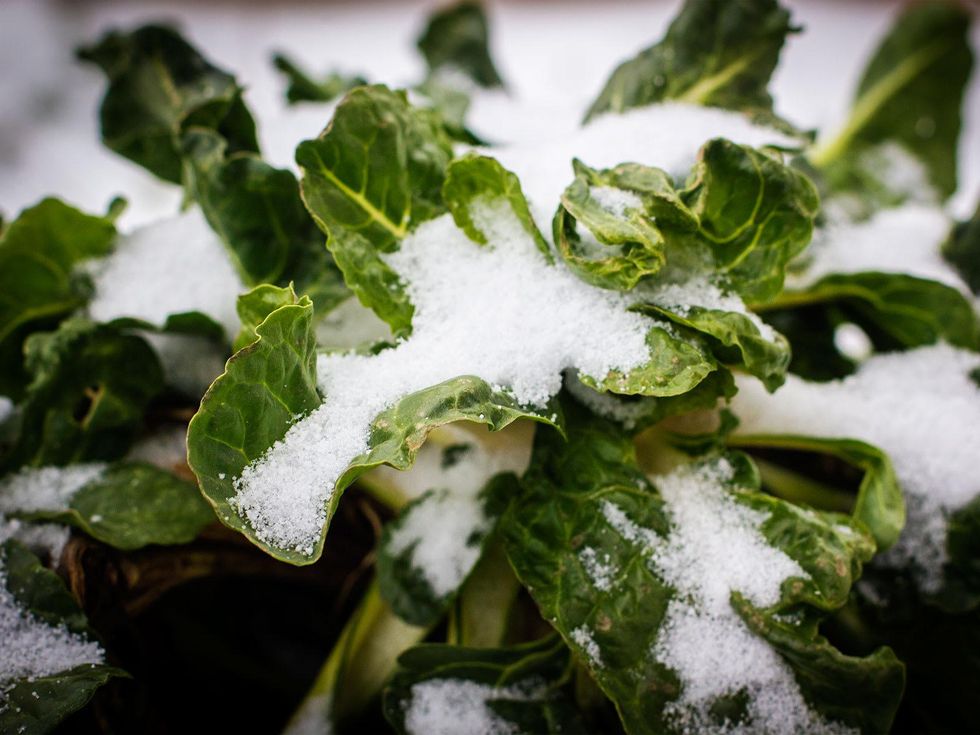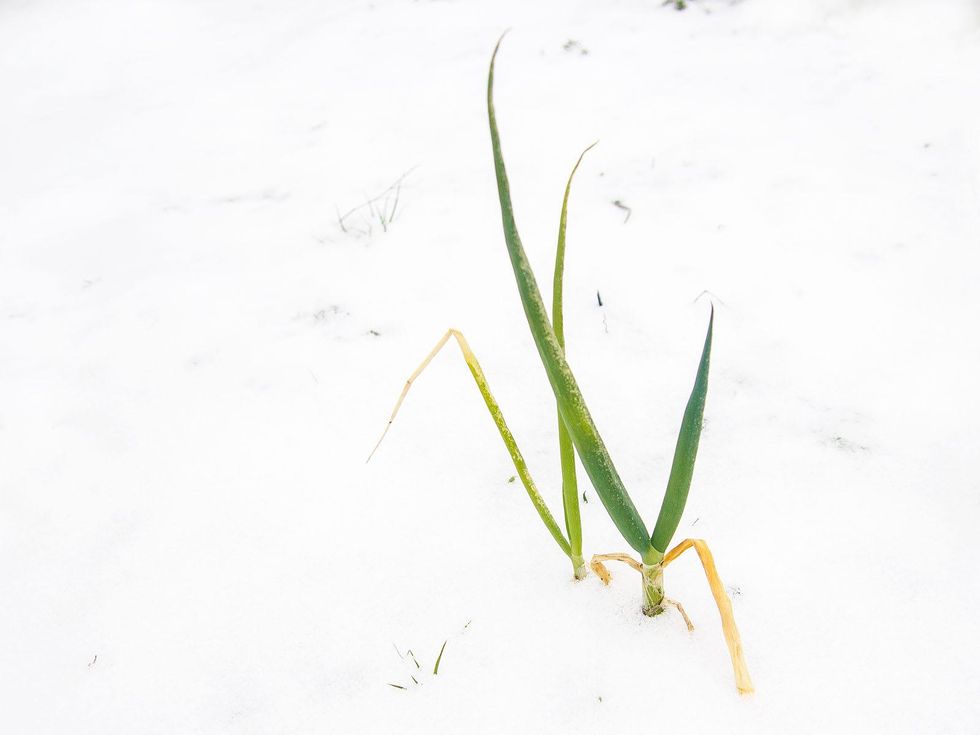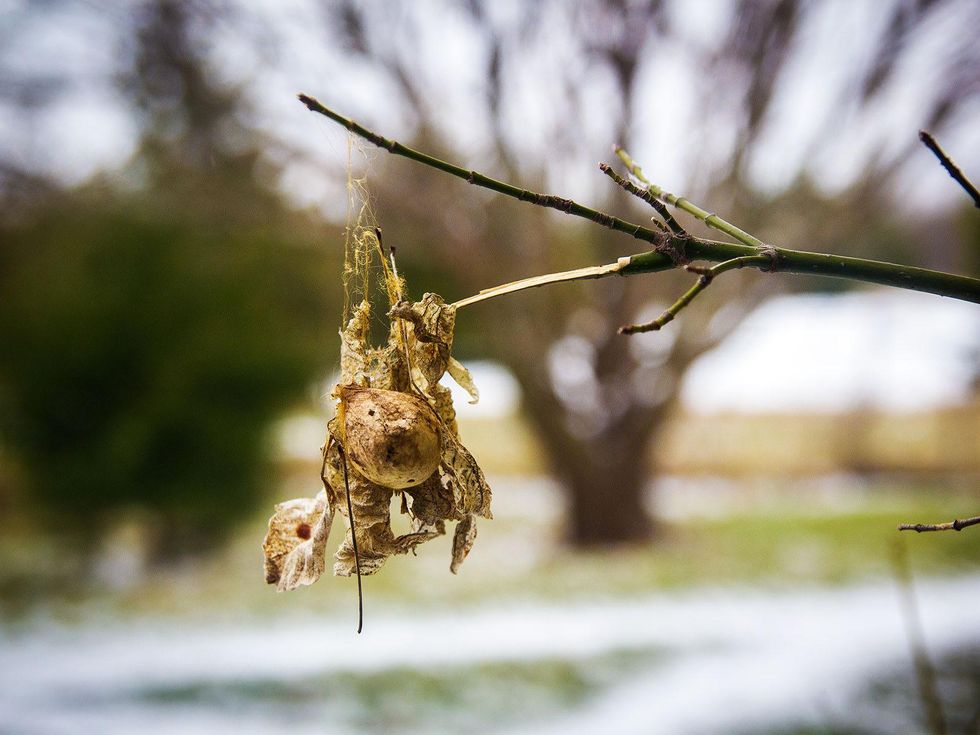The Farmer Diaries
Frost-bitten Texas farmer adopts new timetable to sow seeds
Snow covering the landscape at the end of February brought a scenic end to last year's lingering crickets and other insects. Winter precipitation and frigid temperatures purge the landscape of the insects we call pests, cleaning the slate for the coming growing season.
Nevertheless, I can't help but feel cooped up by the chilly weather. I'd rather be outside, building up my organic raised bed garden. Instead, I'm stuck indoors with nothing to do but overwater my seed starts.
The terrain from Austin to North Texas is part of USDA zone 8, putting the average last frost for the year in mid-March. In the past, I treated this date as the starting gun for sowing seeds and planting transplants. For most years, it worked out well. But more recently, late spring freezes have made me reevaluate when I start my crops.
This year, I will wait out the unpredictable climate until I see a long-range forecast of warm days and nights.
In April 2013 and May 2014, temperatures plunged below 32 degrees. My effort to save my tomatoes, peppers, squash and melons from freezing was a labor I refuse to undertake again. This year, I will wait out the unpredictable climate until I see a long-range forecast of warm days and nights.
But the threat of a later-than-average frost is only half the reason not to plant too early. The other half relates to soil temperatures. Even in years when the frosts subsided on time — when I ignorantly planted seeds on or soon after March 15 and my crops grew well — was like winning the weather lottery. Nighttime lows and daytime highs in those years heated up the soil by chance to optimum temperatures.
For the last several years, brisk temperatures have kept my soil cool. The seeds I planted rotted in the ground before they got a chance. Clueless, I blamed the crop no-shows on rats stealing my seed, or rabbits eating the seedlings at night before I got a chance to see them. Now I know that unless the soil is warm enough, sowing seeds the first chance I get, just because spring has arrived, is about the same as throwing most of those seeds away.
Soil temperature is a result of the daytime highs and nighttime lows and the amount of direct sunlight hitting the ground where crops are planted. The soil will remain a little cooler than the ambient temperature; once nights are in the 60s and days in the 70s, and there's plenty of warm sunlight, the soil just under the surface will be close to those temperatures.
I first became aware of seeds' soil temperature requirements when I found a chart showing the germination times and temperatures for various crops in the appendix of Mel Bartholomew's book, Square Foot Gardening. In the chart, I saw that beans won't germinate if the temperature is 50 degrees or below. At 59 degrees, they will start to germinate, but it can take as long as 16 days for them to sprout.
On the other hand, waiting until temperatures reach the 70s will ensure that beans germinate about eight days after they're sown. For every additional day a seed stays in the ground without germinating, it's more prone to suffer an invasion of pathogens that can cause it to rot.
It's better if a seed is sown in the right conditions to ensure a quick germination. If I wait and sow seeds when temperatures are warmer, I will avoid the discouraging wait time and low seed turnout I experience when I sow too early.
Bartholomew's chart is detailed, showing what temperatures result in no germination at all, along with temperatures that will start to make a few seeds pop up. Studying it as well as an adjacent chart that shows the percentage of seeds that germinate at certain temperatures, I now have a handle on when I need to plant, and it's when the temperatures are right, regardless of the date on the calendar.
Here are a few key crops and their ideal planting temps:
- Carrots. When the temps reach 68 degrees and above, about 96 percent of the seed will germinate.
- Cucumbers. Temps from 68-95 degrees will push 99 percent of the seeds to germinate.
- Lettuce. Up to 99 percent of the seeds will germinate until temps reach 77 degrees. At 86, only 12 percent will germinate, which shows that some crops require cooler weather.
- Melons. I won't even bother to sow melon seeds until temperatures average around 77 degrees, resulting in a 94 percent germination rate.
- Corn. Once temperatures reach the 60s, about 95 percent of the seed will germinate.
- Spinach. Spinach reaches its highest germination rate at 41 degrees. It therefore sprouts well in early spring but becomes less reliable as the season progresses and temperatures rise.
I know that, once I see garden centers busy with customers who plant at the first hint of warm sunlight, I'll feel compelled to get started too, for fear of falling behind. I've bookmarked the charts for reference when I get infected with this drive. I think the information will save me hours of labor that I'd waste on reseeding crops that fail because I plant them too soon.



